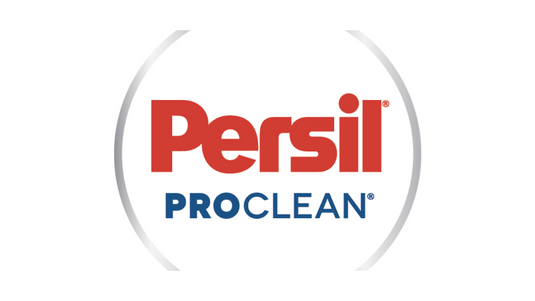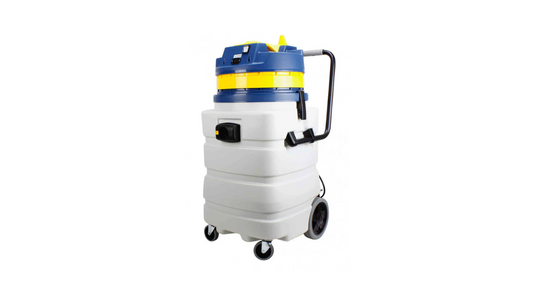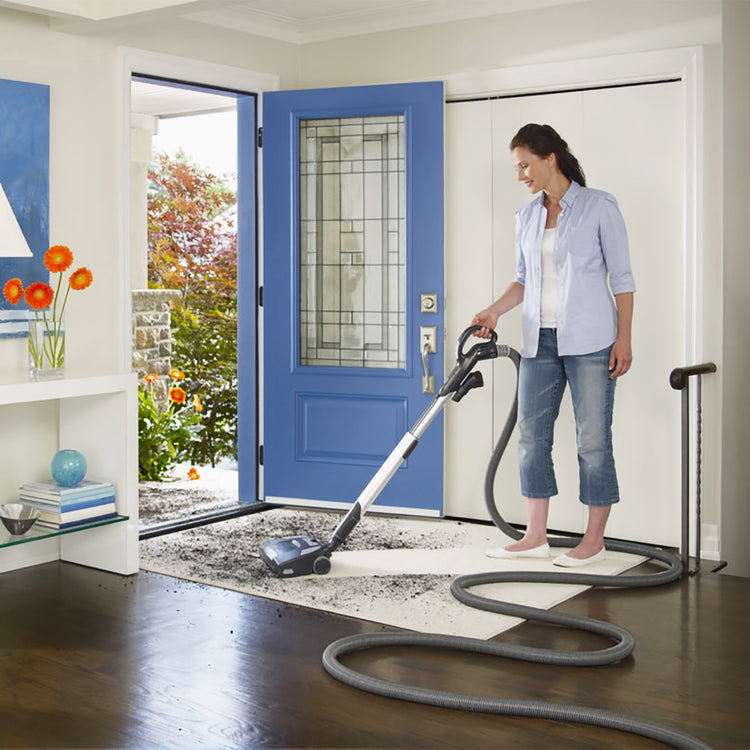What to Consider When Choosing the Best Central Vacuum System
Before selecting a central vacuum system, take the time to decide what features are the most important to you—which could include the air watts, filtration system, noise level, ease of use, and whether or not the unit comes with additional attachments to make vacuuming the home easier. Keep reading for detailed information on these product factors and more.
Air Watts and Power
The power of a central vacuum system is typically measured in air watts. To determine the air watts of a central vac, multiply the airflow in cubic feet per minute (CFM) by the water lift in inches, and divide the total by 8.5. Here’s the equation:
(airflow x water lift)/8.5 = air watts
Water lift refers to the central vacuum system’s ability to suck liquids through the system, while the airflow measures the system’s ability to pull air into the system. The amperage of the vacuum cleaner can also influence the overall power of the system. The higher the amperage rating, the more powerful the vacuum. Just keep in mind that the farther the inlet receptacle is from the central vacuum motor, the less power the vacuum will have—so large homes may experience reduced air watts on the top floor when compared to the power output on the main floor of the home.
Collection and Filtration System
When it comes to collection and filtration, central vacuum systems have a range of different options including bagged, bagless, vertical, cyclonic, and inverted.
- Bagged systems have disposable vacuum bags to collect the dust, dirt, hair, and other debris from the home. When the bag gets full, it needs to be replaced; otherwise, the power and air watts of the vacuum become severely reduced and the motor can burn out.
- Bagless systems collect the same dirt and debris as a bagged system, but instead of relying on a disposable bag, the vacuum pulls the debris into a collection chamber. The collection chamber still needs to be emptied regularly to avoid the same problems that can occur with a full vacuum bag.
- Vertical central vacuum systems typically use vacuum bags. The airflow and debris are sucked down into an upright collection system, trapping dust, dirt, hair, and more in a bag for disposal.
- Cyclonic central vacuum systems make use of centrifugal force to help separate dirt clumps, hair, and other debris as it enters the collection tank. These systems are typically bagless, sucking the dirt into the canister for disposal.
- Inverted central vacuum systems resemble vertical systems, except that the air is pulled up and across the vacuum filter instead of down into it. This difference uses gravity to help keep the filter clean as dust, dirt, and other particles drop down off of the filter into the collection tank below when the system is turned off.
Noise
One of the more appealing features of a central vacuum system is that it doesn’t produce a lot of noise. This is primarily because the motor and the collection tank are typically located in a basement, garage, or closet, where the sound is muffled. However, if the vacuum is being used and anyone in the home is close to the central collection tank, the ongoing drone of the motor could get irritating.
Look for a central vacuum system with noise-blocking filters and thick collection tanks to help dampen and reduce the amount of sound produced by the vacuum if the intended location of the collection tank is close to a home office or a basement bedroom.
Attachments
Like most vacuums, central vacuum systems can come with a wide range of accessories that help to get into tight corners, reach overhead, suck up liquids, clean upholstery, and more. These accessories can include crevice nozzles, elbow wands, wet nozzles, brush nozzles, hose extensions, and powered vacuum heads.
- Crevice nozzles are long, thin attachments that help suck up debris in tight corners and crevices around the home.
- Elbow wands connect to the hole to help shorter individuals vacuum spiderwebs from ceiling corners and reach the tops of floor-to-ceiling curtains.
- Wet nozzles have a squeegee edge to help collect and suck up liquids. The squeegee pulls the water in, and the nozzle sucks it into the vacuum system.
- Brush nozzles are also referred to as upholstery tools because they’re intended to clean upholstery, like curtains and some furniture. However, this tool is also very helpful for vacuuming car interiors.
- Hose extensions can be flexible or rigid, and the entire purpose of these accessories is to give the user a little extra length to the end of the hose.
- Powered vacuum heads allow users to vacuum the carpets as if they were using a standard vacuum instead of a central vacuum system. These accessories consist of a powered vacuum head that connects to an upright, hollow suction tube. Just attach the central vacuum hose to the tube in order to power this device and start vacuuming the floors with ease.
Installation
Unfortunately, one of the primary obstacles for most people when it comes to a central vacuum system is the installation. As mentioned, the central vac tubing needs to run inside the walls of the home, from the central vacuum motor and collection tank to every floor of the home, so you may need a professional central vacuum installer to complete the installation.
If you choose to install the system yourself, it’s important to note that central vac tubing is not the same as a drainpipe, despite the comparable appearance. The system should also have at least one valve inlet on every floor, with most floor plans requiring one inlet for every 750 square feet. These inlets include a low-voltage coupler that triggers the on/off switch at the motor.
Blog posts
-
 How to Choose the Best Electric Pressure Washer for Your NeedsRead more →
How to Choose the Best Electric Pressure Washer for Your NeedsRead more →An electric pressure washer is one of the most versatile cleaning tools you can own. Whether it’s blasting away stubborn grime from your driveway, restoring the look of your deck, or giving your car a spotless shine, the right model can save you hours of scrubbing and buckets of water.
-
 Persil Laundry Detergent — Professional Review and Performance AnalysisRead more →
Persil Laundry Detergent — Professional Review and Performance AnalysisRead more →Persil Laundry detergent may seem like a simple household product, but the difference between an average detergent and a premium one can be significant. Cleaning power, stain removal ability, fabric care, scent, and even environmental impact all play a role in choosing the right brand.
-
 Vapamore MR-1000 Forza Review: Power and Performance in Automotive Steam CleanersRead more →
Vapamore MR-1000 Forza Review: Power and Performance in Automotive Steam CleanersRead more →When it comes to automotive steam cleaners, not all machines are built the same. In professional detailing and heavy-duty cleaning, the right equipment can make all the difference between a quick wash and a showroom-quality finish. One product that has gained a strong reputation in the detailing industry is the Vapamore MR-1000 Forza Commercial Steam Cleaner. In this review, we’ll break down its features, performance, and why it stands out as a top choice for both professionals and serious car enthusiasts.
-
 Johnny Vac Heavy Duty Vacuum 22.5 Gallon: A Wet Dry Vacuum Built for ProfessionalsRead more →
Johnny Vac Heavy Duty Vacuum 22.5 Gallon: A Wet Dry Vacuum Built for ProfessionalsRead more →In commercial and industrial environments, cleaning is more than just about appearance—it’s about efficiency, safety, and durability. Spills, dust, and debris can slow down work and even pose hazards, which is why having the right cleaning equipment is critical. Enter the Johnny Vac Heavy Duty Wet Dry Vacuum – 22.5 Gallon Capacity, a powerhouse designed for professionals who need both versatility and reliability in one machine.







